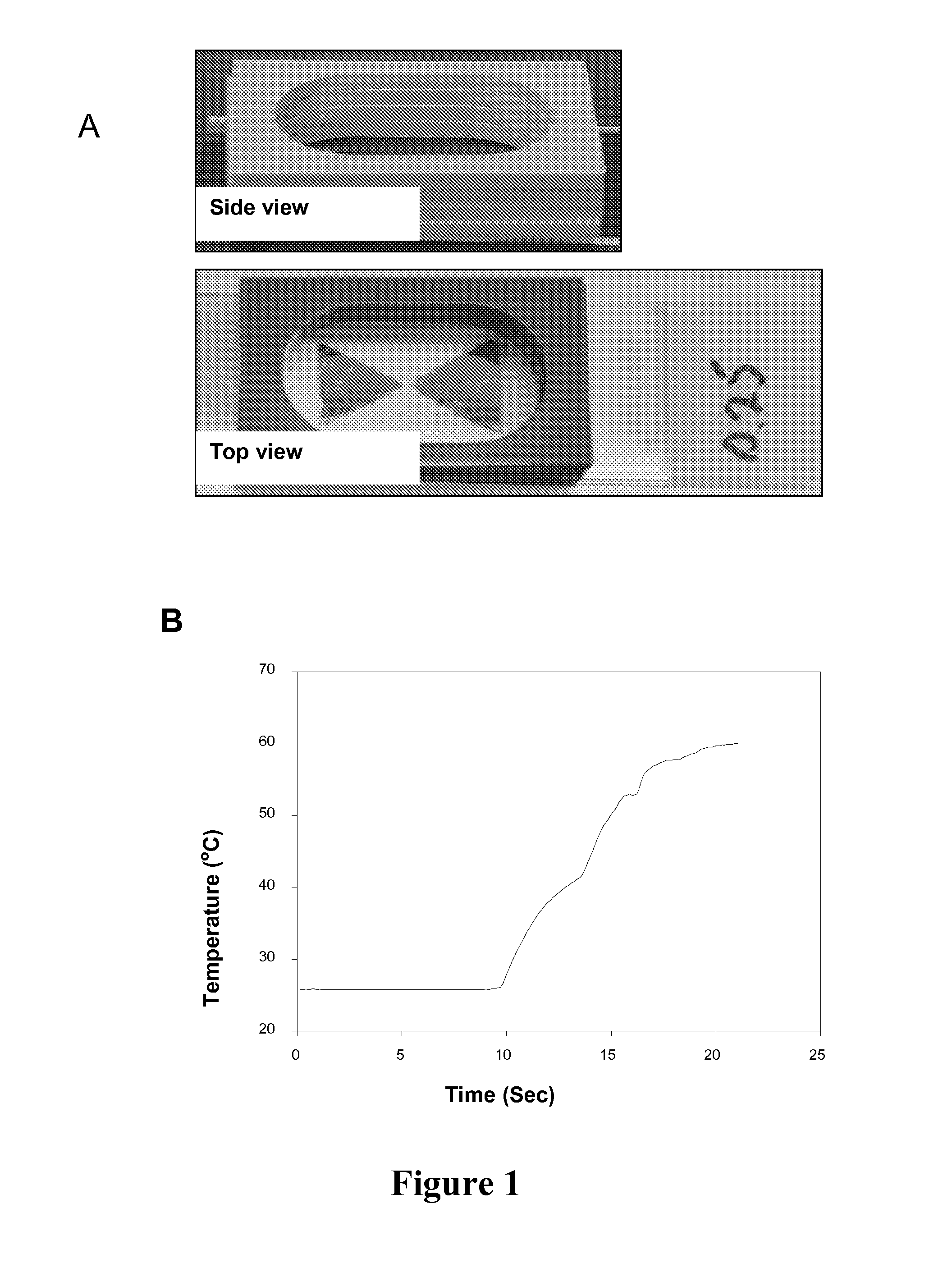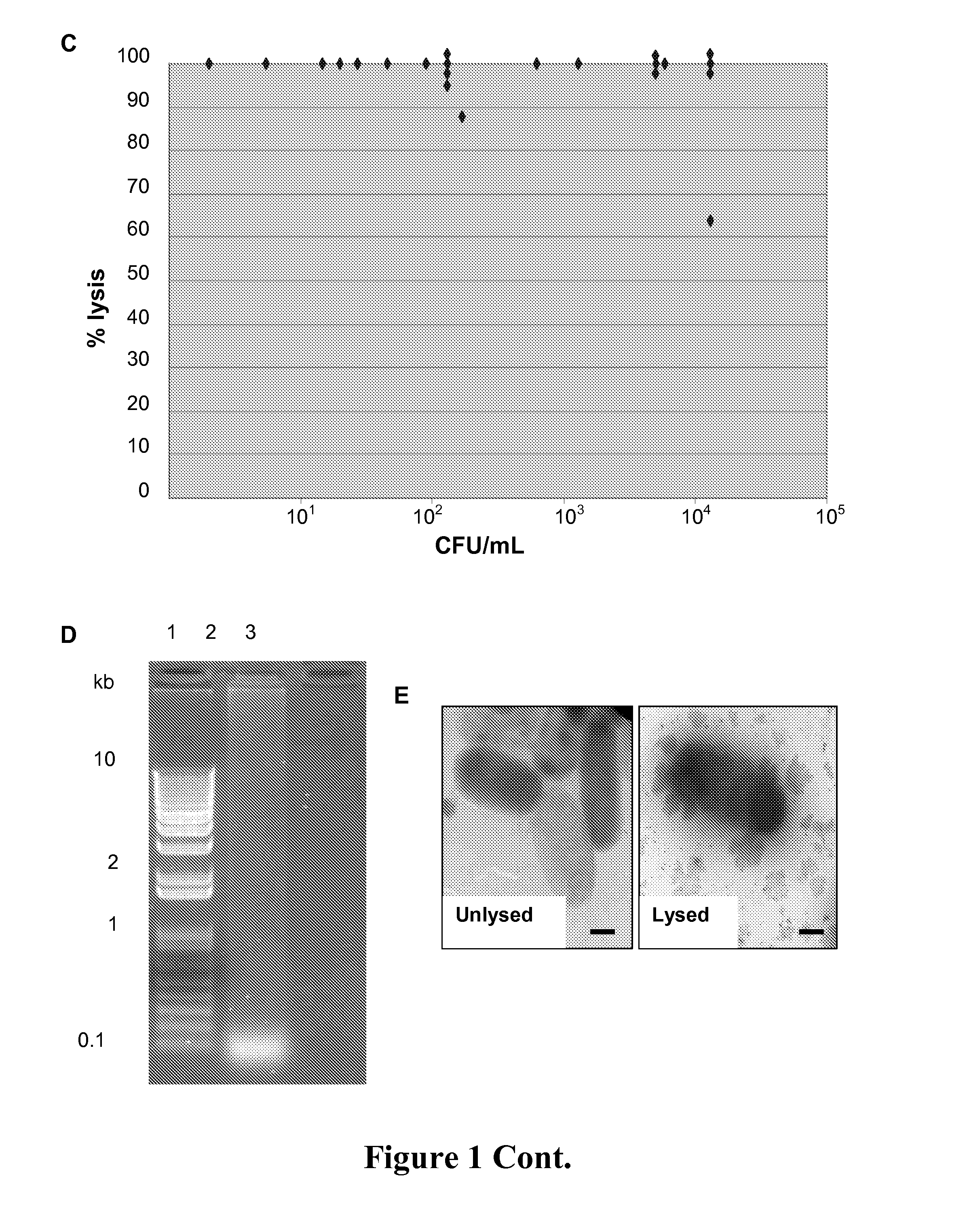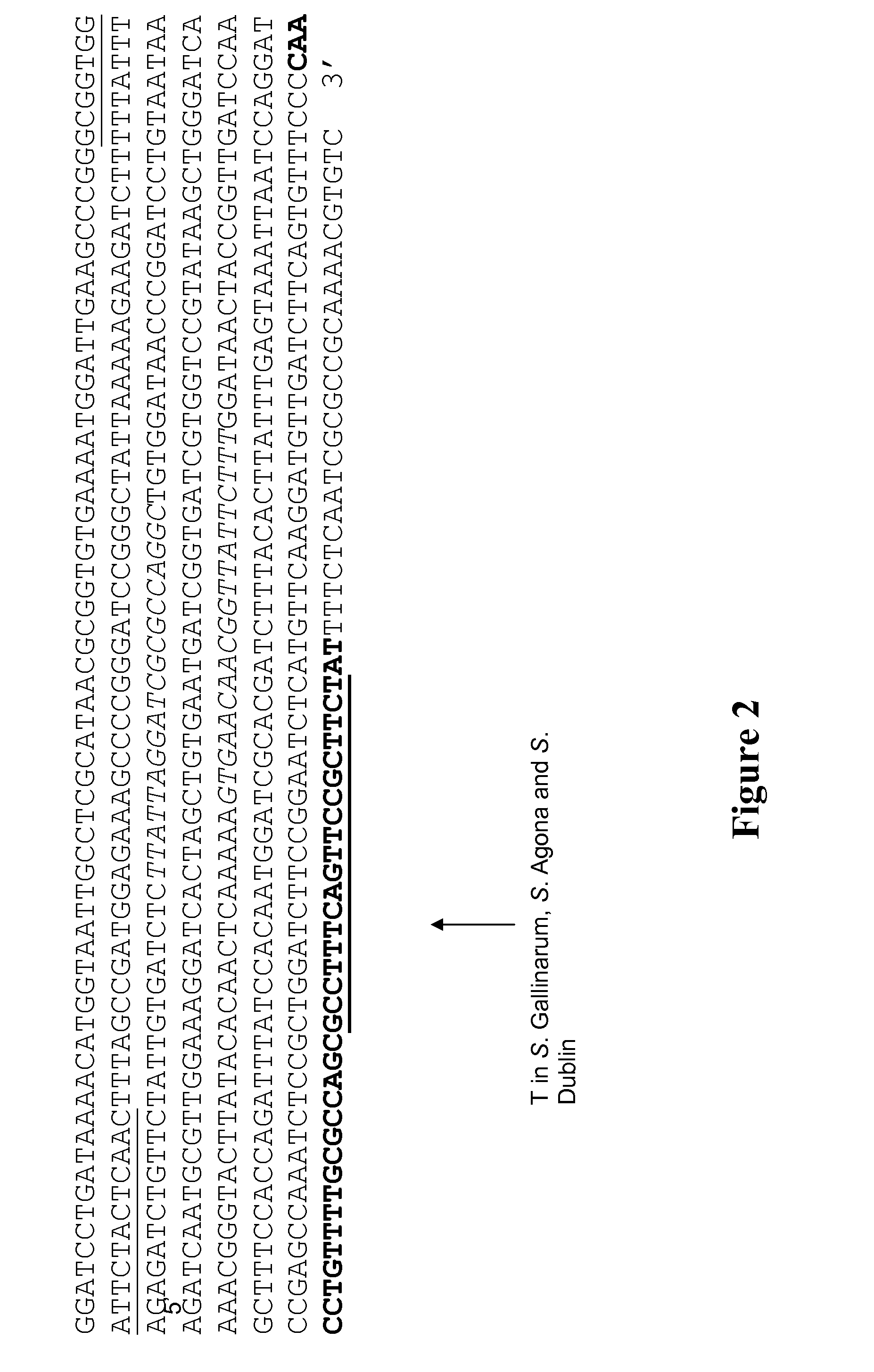Assays for pathogen detection using microwaves for lysing and accelerating metal-enhanced fluorescence
a technology of lysing and fluorescence, which is applied in the field of pathogen detection using microwaves for lysing and accelerating metal-enhanced fluorescence, can solve the problems of not being able to establish a typhoid fever diagnosis method, pcr has not yet become an established method, and still takes several days for detection of i>salmonella,
- Summary
- Abstract
- Description
- Claims
- Application Information
AI Technical Summary
Benefits of technology
Problems solved by technology
Method used
Image
Examples
examples
Methods and Material
Bacterial Strains, Blood and Genomic DNA
[0095]An attenuated Salmonella Enteritidis strain R11 ΔguaBA carrying plasmid pGEN206 was used to optimize microwave lysis and the MAMEF assay. This mutant is unable to synthesize guanine and is highly attenuated (unpublished results). The parent strain, S. Enteritidis R11, was isolated from the blood of a child in Mali.[11] Plasmid pGEN 206, which carries gfpUV, was used to monitor efficient lysis of bacteria by fluorescence microscopy. Other Salmonella strains tested included S. Typhi (2 strains), S. Paratyphi A (2 strains), S. Paratyphi B (2 strains), S. Paratyphi C (1 strain), S. Typhimurium (2 strains), S. Enteritidis (2 strains), S. Dublin (2 strains), S. Choleraesuis sensu stricto (1 strain), S. Choleraesuis var. kunzendorf (1 strain) and S. Newport (1 strain) that came from Salmonella collections at the CVD or the Salmonella Reference Laboratory at the Centers for Disease Control and Prevention (Atlanta, Ga.). Non-S...
PUM
| Property | Measurement | Unit |
|---|---|---|
| diameter | aaaaa | aaaaa |
| diameter | aaaaa | aaaaa |
| power level | aaaaa | aaaaa |
Abstract
Description
Claims
Application Information
 Login to View More
Login to View More - R&D
- Intellectual Property
- Life Sciences
- Materials
- Tech Scout
- Unparalleled Data Quality
- Higher Quality Content
- 60% Fewer Hallucinations
Browse by: Latest US Patents, China's latest patents, Technical Efficacy Thesaurus, Application Domain, Technology Topic, Popular Technical Reports.
© 2025 PatSnap. All rights reserved.Legal|Privacy policy|Modern Slavery Act Transparency Statement|Sitemap|About US| Contact US: help@patsnap.com



